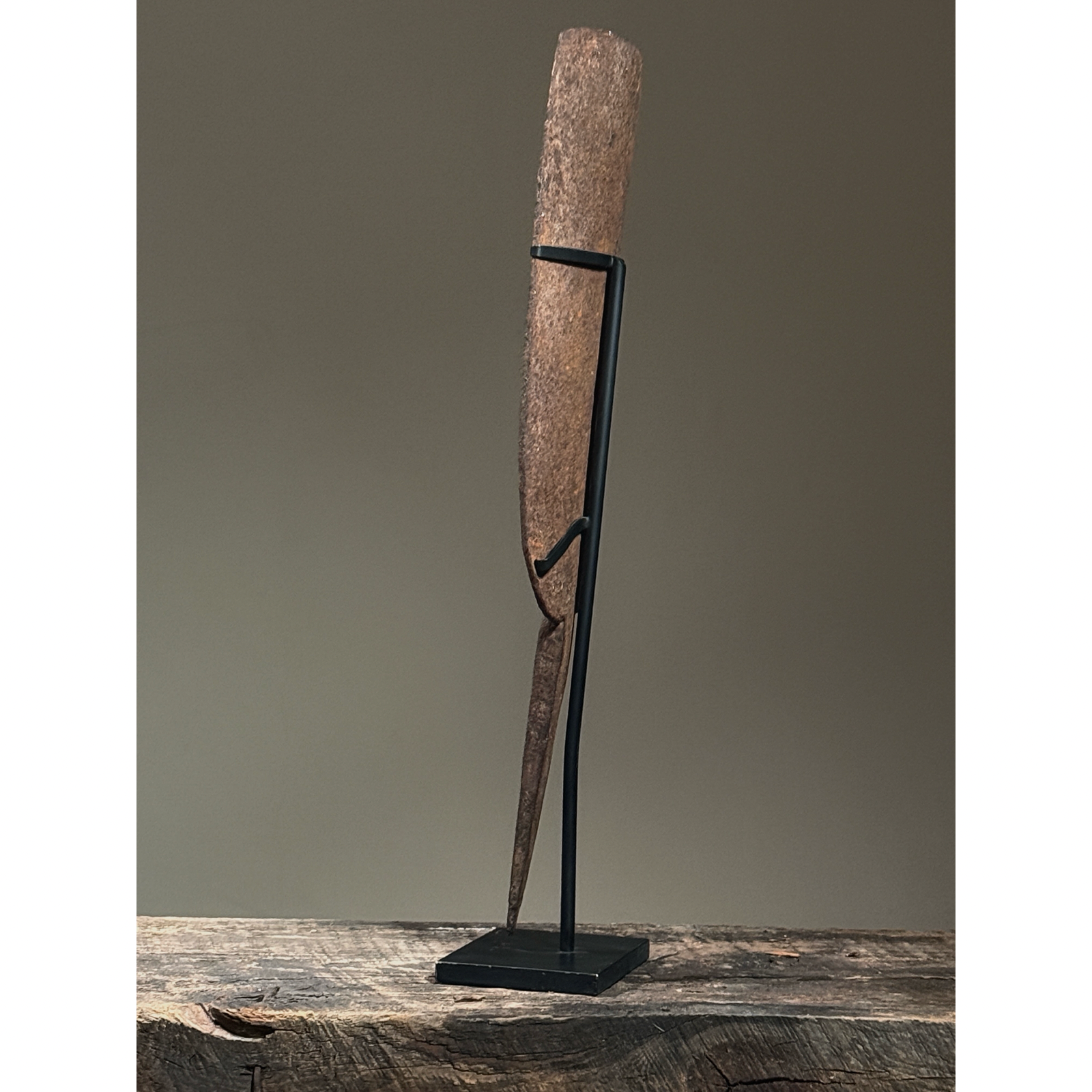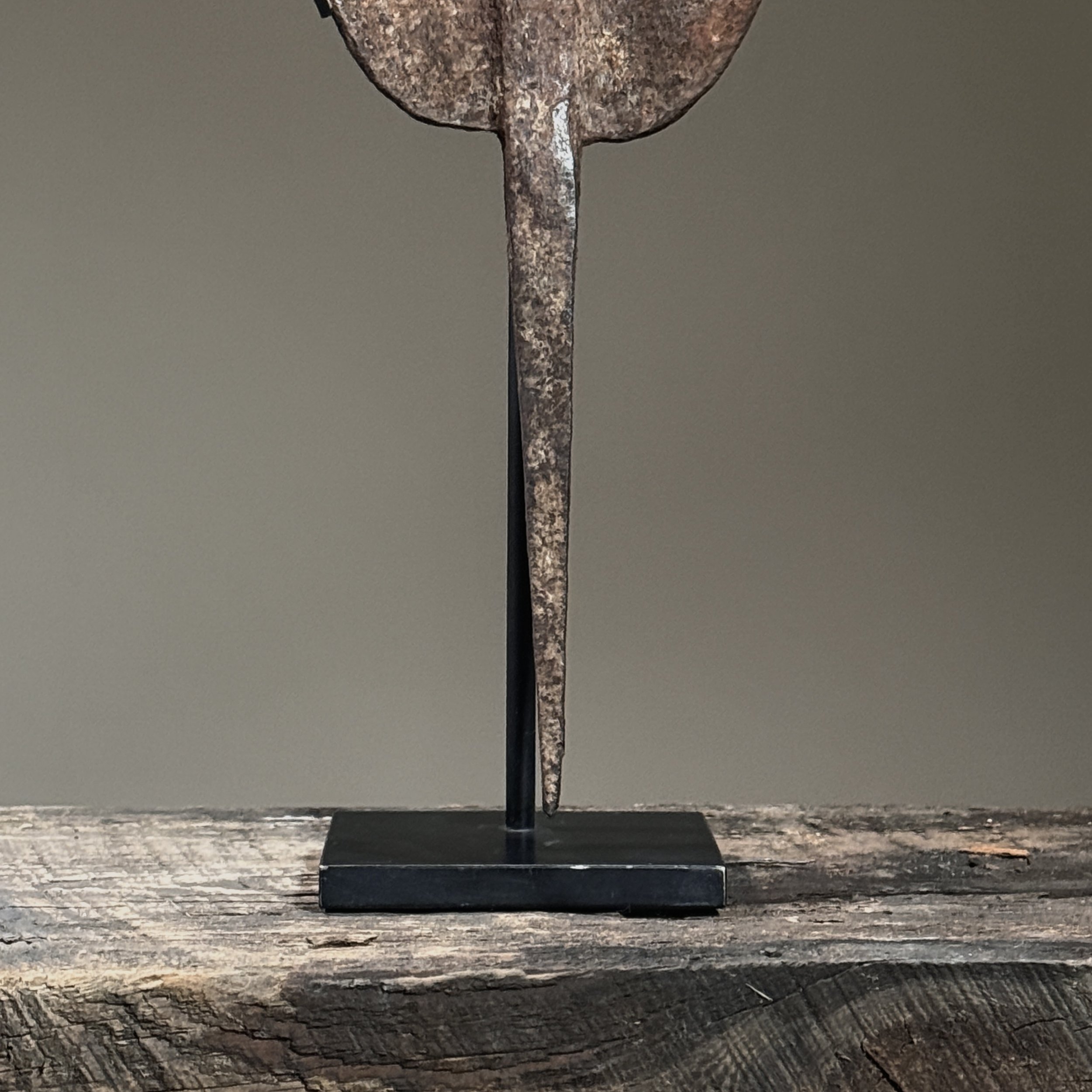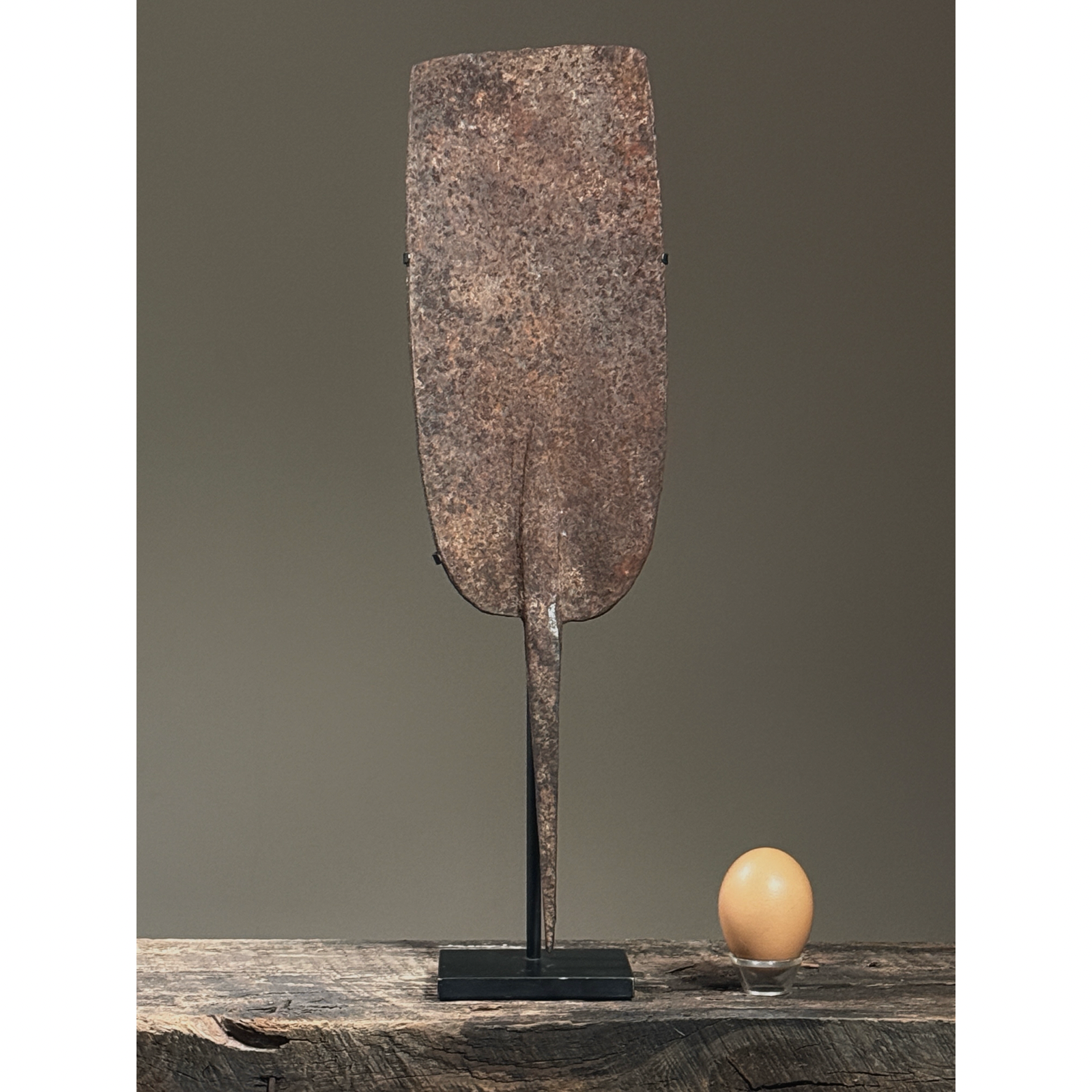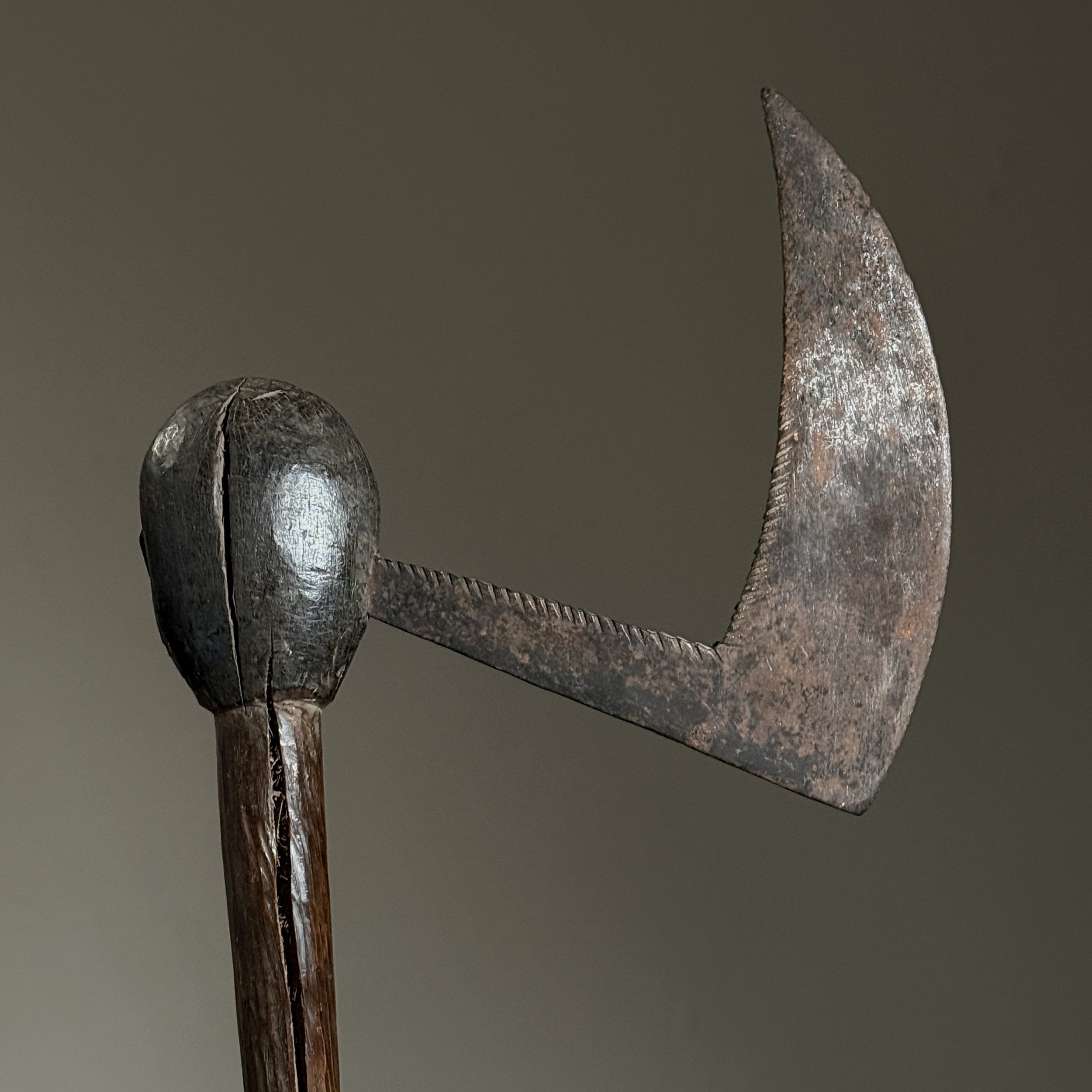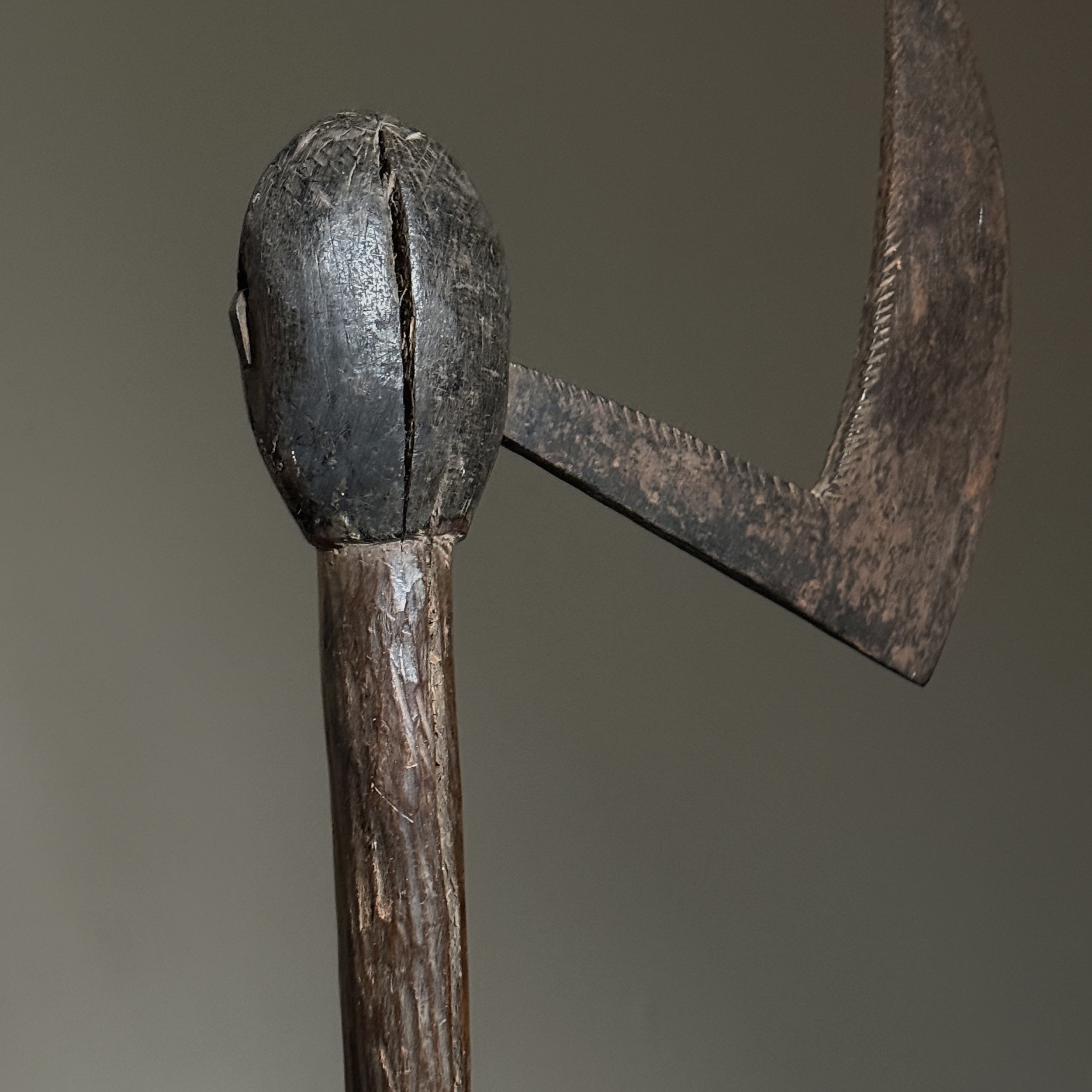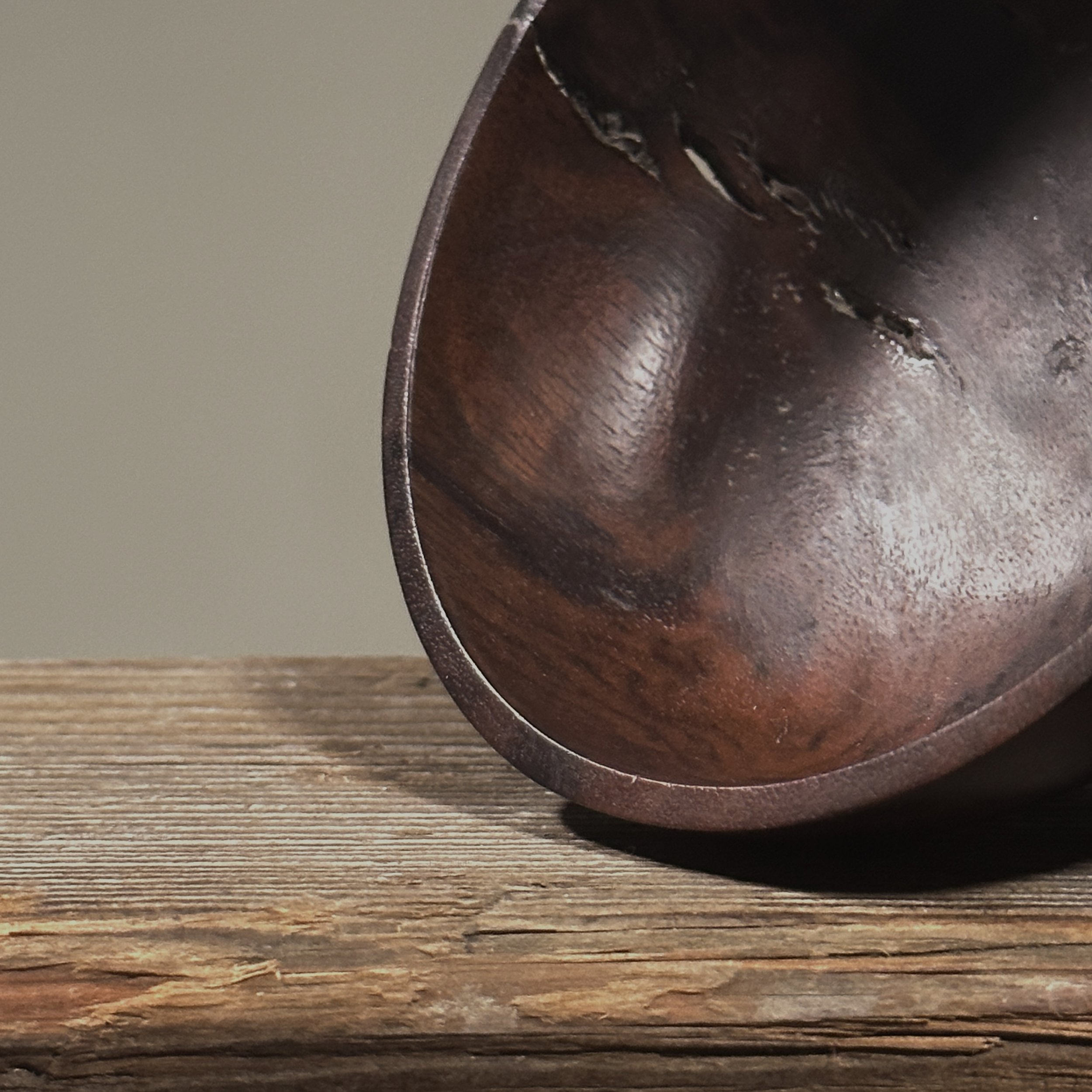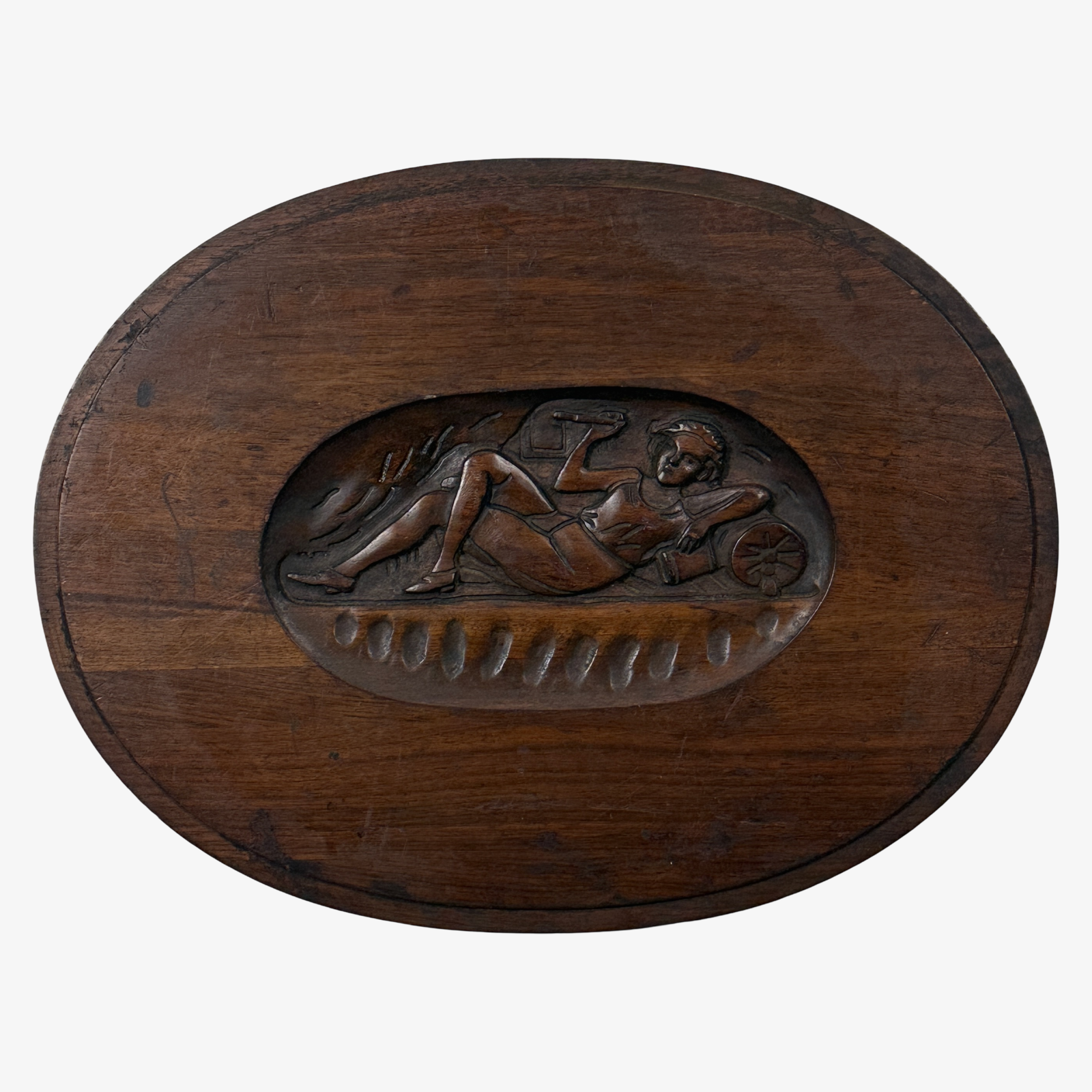 Image 1 of 8
Image 1 of 8

 Image 2 of 8
Image 2 of 8

 Image 3 of 8
Image 3 of 8

 Image 4 of 8
Image 4 of 8

 Image 5 of 8
Image 5 of 8

 Image 6 of 8
Image 6 of 8

 Image 7 of 8
Image 7 of 8

 Image 8 of 8
Image 8 of 8









Antique African Forged Metal Mumuye Figure (Nigeria)
Antique African Forged Metal Mumuye Figure (Nigeria). Hand forged Mumuye figure with incised face, earrings, collared neck, and collared base. In good condition with patina and wear consistent with age.
Size: 22”H x 5”W x 4.5”D
Provenance: Estate of Professor Philip Gould, NYC; Exhibited "Africa's Iron & Copper Currencies", Institute of African Studies, Columbia University, March 2000. Professor of Chinese Art History at Columbia University and Sarah Lawrence College, Professor Philip Gould was a passionate collector of African Art, and curated numerous museum and gallery exhibitions from his personal collection.
Mummy figures are highly abstracted, perhaps in part because they invoke forms of human and supernatural authority. The statue may have added elements: beads, belts, bracelets, chains, leather laces, ropes or braided vegetable matter, brass wires, or cowrie shells. The statues’ principal characteristic, unique in African art, is the openwork between the body and the arms, which forms a scroll or a spiral around the slender, cylindrical bust. The legs are usually angular, and ribbon-like arms wrap around the torso with elbows clearly marked. The heads may display a coiffure in the form of a crest. Scarification on face and body is delineated and nasal septum may be perforated for the insertion of a short section of a stalk of Guinea corn. A number of such sculptures have large ears with pierced and distended earlobes for the insertion of plugs. The Mumuye distinguish the gender of the figures on the basis of the shape of the ears; only Mumuye women distend their earlobes. This may be the only clue to determining the gender of a figure.
Antique African Forged Metal Mumuye Figure (Nigeria). Hand forged Mumuye figure with incised face, earrings, collared neck, and collared base. In good condition with patina and wear consistent with age.
Size: 22”H x 5”W x 4.5”D
Provenance: Estate of Professor Philip Gould, NYC; Exhibited "Africa's Iron & Copper Currencies", Institute of African Studies, Columbia University, March 2000. Professor of Chinese Art History at Columbia University and Sarah Lawrence College, Professor Philip Gould was a passionate collector of African Art, and curated numerous museum and gallery exhibitions from his personal collection.
Mummy figures are highly abstracted, perhaps in part because they invoke forms of human and supernatural authority. The statue may have added elements: beads, belts, bracelets, chains, leather laces, ropes or braided vegetable matter, brass wires, or cowrie shells. The statues’ principal characteristic, unique in African art, is the openwork between the body and the arms, which forms a scroll or a spiral around the slender, cylindrical bust. The legs are usually angular, and ribbon-like arms wrap around the torso with elbows clearly marked. The heads may display a coiffure in the form of a crest. Scarification on face and body is delineated and nasal septum may be perforated for the insertion of a short section of a stalk of Guinea corn. A number of such sculptures have large ears with pierced and distended earlobes for the insertion of plugs. The Mumuye distinguish the gender of the figures on the basis of the shape of the ears; only Mumuye women distend their earlobes. This may be the only clue to determining the gender of a figure.
Antique African Forged Metal Mumuye Figure (Nigeria). Hand forged Mumuye figure with incised face, earrings, collared neck, and collared base. In good condition with patina and wear consistent with age.
Size: 22”H x 5”W x 4.5”D
Provenance: Estate of Professor Philip Gould, NYC; Exhibited "Africa's Iron & Copper Currencies", Institute of African Studies, Columbia University, March 2000. Professor of Chinese Art History at Columbia University and Sarah Lawrence College, Professor Philip Gould was a passionate collector of African Art, and curated numerous museum and gallery exhibitions from his personal collection.
Mummy figures are highly abstracted, perhaps in part because they invoke forms of human and supernatural authority. The statue may have added elements: beads, belts, bracelets, chains, leather laces, ropes or braided vegetable matter, brass wires, or cowrie shells. The statues’ principal characteristic, unique in African art, is the openwork between the body and the arms, which forms a scroll or a spiral around the slender, cylindrical bust. The legs are usually angular, and ribbon-like arms wrap around the torso with elbows clearly marked. The heads may display a coiffure in the form of a crest. Scarification on face and body is delineated and nasal septum may be perforated for the insertion of a short section of a stalk of Guinea corn. A number of such sculptures have large ears with pierced and distended earlobes for the insertion of plugs. The Mumuye distinguish the gender of the figures on the basis of the shape of the ears; only Mumuye women distend their earlobes. This may be the only clue to determining the gender of a figure.




